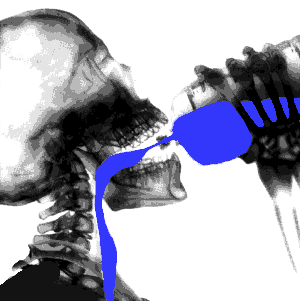It’s all around us. We live with it every day. We wear it. We sit on it. We eat/ heat our food in it, nay, we may even be eating it. The word has gained so much fame (or is it infamy?) that we sometimes even use it to describe people we’re allergic to. Of course, you know the word: Plastic!

"Plastic is ubiquitous in our lives because it is convenient and relatively inexpensive," notes writer Paul Goettlich. "It is advertised as safe (or is it?) and that it saves lives (or doesn’t it cost lives?) ... "
The truth about plastic is that it is made by combining monomers into polymers under great heat and pressure during a process called polymerization. There are different formulas for making plastic. Among the additives used are UV filters, plasticizers, flame retardants, colorants, antioxidants, and heavy metals such as cadmium, mercury, and lead. In Goettlich’s story titled "You are what you eat," he writes that chemicals are also used to facilitate production "such as mold releases and countless other toxic chemicals regularly added to plastic consumer goods without our knowledge or approval. Many of the intermediary steps of plastics production are used in other plastics or industrial processes and products such as pesticides or fertilizers. For holistic thinkers, the mention of plastics and pesticides in the same sentence should begin an informative thought process ..."
Goettlich tells us the ugly truth and nothing but: "When you eat or drink things that are stored in plastic, taste it, smell it, wear it, sit on it, and so on, plastic is incorporated into you. In fact, the plastic gets into the food and food gets into the plastic and you. So, quite literally, you are what you eat – plastic!"
Goettlich points to vinyl or PVC as the worst plastic. [Polycarbonates such as baby bottles contain] the notorious monomer BPA. A few years ago, the Consumers Union found BPA "at worrisome levels" in samples from baby bottles. Children are exposed to BPA through dental sealants with which dentists coat their teeth.
Among its multitude of uses, Goettlich's article points out that even most cardboard milk containers are now coated with plastic (rather than wax); it is sprayed on both commercial and organic produce to preserve their freshness. It is even used to transport organic produce.
Asked what’s the safest plastic to use – and the safest plastic to microwave food in, Goettlich replies, "Plastic should never contact food. And one should never microwave food – it’s probably as bad or worse than putting it in plastic because it creates free radicals in the food that damage cells in your body. It also heats the plastic, thus increasing the rate of migration into the food."
Goettlich, further courting the ire of the thriving plastics industry, can’t stress this enough: "Plastics, their additives, and other processing chemicals can be toxic at extremely low concentrations. In fact, some are significantly more toxic at extremely low concentrations than at much higher concentrations."
Before we’re eaten up by plastics and we destroy our ecosystem to smithereens, Goettlich urges, "While it’s impossible to avoid all plastics, we must rid our diets and lives of this toxic material as much as possible."

No comments:
Post a Comment